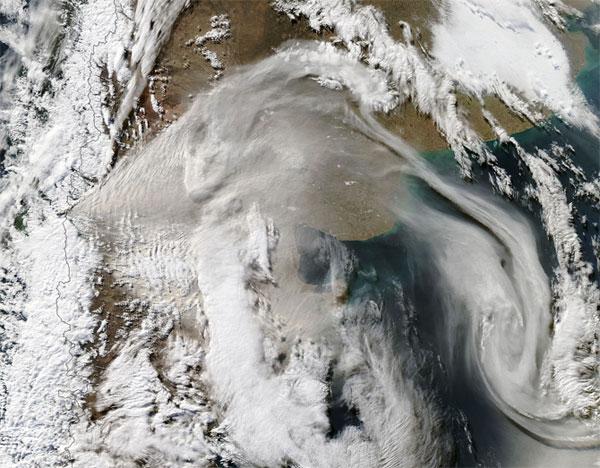
Chile's Big Volcano Eruption Seen From Space

A Chilean volcano roared to life last weekend for the first time in half a century, and two satellites are keeping a close watch on its activity from above.
The Puyehue-Cordón Caulle volcano began erupting on June 4, marking its first big outburst in 51 years. As of Thursday (June 9), the volcano was still spewing ash and dust into the air, and two Earth-observing spacecraft are tracking the resultant debris plume as it wafts over large tracts of southern South America.
One of these satellites is GOES-13 (Geostationary Operational Environmental Satellite-13), which is operated by the United States' National Oceanic and Atmospheric Administration (NOAA). A team of NASA researchers gathered together GOES-13 observations from June 4 to June 6 to make a video of the plume's movement.
The 38-second video shows the ash plume shift dramatically. On June 4, it was flowing strongly to the southeast, but by June 6 it had begun blowing mostly north.
NASA's Aqua satellite is also keeping tabs on the eruption from its lofty orbital perch. An Aqua photo taken at 2:30 p.m. EDT (1830 GMT) on Wednesday (June 8) shows the dusty cloud blowing east over Argentina, covering a huge swath of territory.
Puyehue-Cordón Caulle is found in Puyehue National Park in the Andes of Chile's Ranco Province, just west of the border with Argentina.The initial eruption on June 4 hurled material 45,000 feet (13,700 meters) into the atmosphere. [The World's 5 Most Active Volcanoes ]
Since then, the volcano has continued spewing huge quantities of dust and ash, and the resulting plume has affected much of southern South America.
Sign up for the Live Science daily newsletter now
Get the world’s most fascinating discoveries delivered straight to your inbox.
For example, the Associated Press reported that ash has fallen on both Buenos Aires and Montevideo, the capitals of Argentina and Uruguay, respectively. Both of these cities lie more than 800 miles (1,300 kilometers) away from the volcano.
Ash can damage airplane engines, so dozens of flights have beengrounded, the AP reported. And Chilean officials have already evacuated about 3,500 people who live near Puyehue-Cordón Caulle.











